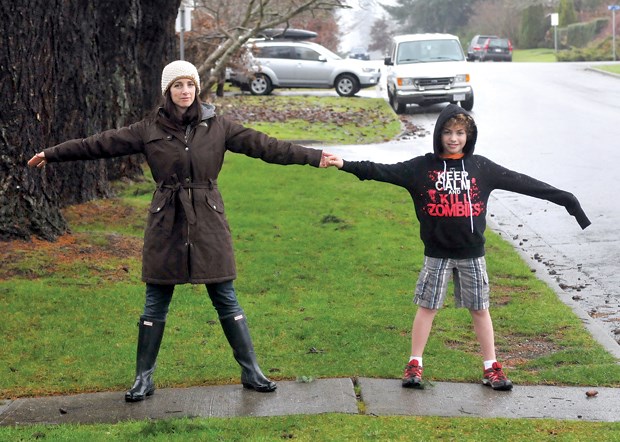A group of Moody Avenue residents say they're getting stuck with sidewalks they don't want and accuse the City of North Vancouver of botching the process to get them.
City council voted unanimously in July to install sidewalks on both sides of Moody Avenue between 13th and Ninth streets.
Under a process contained in the Community Charter, any municipality can build a sidewalk on a public boulevard and charge adjacent homeowners a small percentage of the cost to install it. After being notified of the proposal by official letter, the homeowners have 30 days to express their opposition to the municipality. If a majority of the homeowners representing more than half of the assessed value in the local service area are opposed, the project gets scrapped.
In this case, only seven owners representing 44 per cent of the assessed value filed their objections by the deadline, according to the city, and council voted the project through. Moody Avenue resident Michelle Blaksic appeared before council on Dec. 1 to show the signatures of nine homeowners in the local service area who swear they had their opposition in by the deadline. Blaksic now questions what happened to those votes.
She said most residents on Moody are opposed because the new sidewalks would require them to remove gardens, driveways, paths and even structures. She concedes, however, have been built encroaching on the city-owned boulevard.
Unlike the old standard of four-foot sidewalks placed right against the curb, the Moody Avenue sidewalk will be almost six feet wide and have a five-foot grass buffer from the curb. That was something the city didn't adequately explain during the petition period, Blaksic said.
"It was only two or three days before (the deadline) when the whole neighbourhood became aware it was going to be a huge sidewalk that had boulevards, and gardens were going to be wiped out and driveways were going to be lost. That's when people started to get really serious about their opposition," she said.
Blaksic said she'd like to see the city hold the petition over again and come back with a proposal for narrower sidewalks. The amount of foot traffic the street actually gets doesn't justify the larger sidewalks, she said.
"I think sidewalks are an excellent idea. It's just the scale that they're planning. It's not really a route between two schools. ... It's not on a bus route or near a bus stop. I just don't see this as the right place to do that kind of massive upgrade."
But city engineer Doug Pope said everything was done according to the law, and there is no intention of re-doing the petition.
"We actually undertook a formal review of that process. We had our lawyers look at the process and were told the process was tight, that there were no legal concerns," he said.
And the city has made creating more walkable neighbourhoods a priority.
"Council has indicated a strong desire to move ahead with this project in that it is a key connection to Ridgeway school," Pope said. "School children are walking along that road every day and the community needs a sidewalk there."
Wider sidewalks with grass buffers are considered best practice in city planning now, Pope said, because they allow people to walk side by side or pass other pedestrians without having to step off. And the grass buffer means car doors don't open into the path of pedestrians, he added.
Design work on the $500,000 project is expected to start in January and engineers will work with individual owners to make sure the sidewalk doesn't impact private property or mature trees on the boulevard, even if that means making the sidewalk meander around them, Pope said.
"I think the best thing for us is to move forward and work with the residents to get the sidewalks built and talk to them more about their concerns and design something that addresses their concerns but still provides something of high quality for the public," he said.



